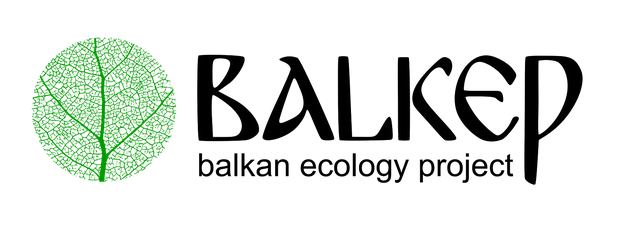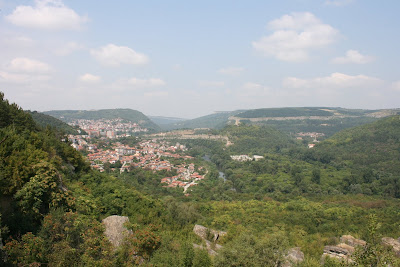I'm a few weeks behind on the blog as I've busy on designs and preparing for our upcoming Design and Build a Forest Garden Course:1-4 Nov . Better late than never I hear, so here is an update from the project.
But first just to let you know we've revamped our Online Store where you can find Forest Garden/ Permaculture Plants, Seeds, Cuttings, Bulbs, Rhizomes and Polyculture Multi-packs along with digital goods and services such as Online Courses, Webinars, eBooks, and Online Consultancy and finally we've added a Bulk Fruit and Nut Tree order form for Farms, Orchards, Nurseries, and Large Regenerative Landscape Projects. If there is anything in the store you would like to see but is not there, please let us know. We hope you enjoy the store and find something you like :) It's your purchases that keep our Project going. Thank you. Enter Our Store Here
 |
| Plants, Seeds, eBooks, Consultancy, Bulk Fruit and Nut Tree Orders for Permaculture, Polyculture, Forest Gardens and Regenerative Landscapes. |
We said goodbye to Ezekiel this week, at age 19 he is youngest person to have participated in the study. Thank's for your help Ezekiel, it was pleasure hosting you here. Here's Ezekiel coming back from a trek up in the mountains where we found a skull of a stag.
The Bio nursery
We're coming to the final weeks of the polyculture study and market garden work for this year and our attention starts to turn towards the nursery.
In the nursery we aim to offer our customers not just plants but plant communities that can form healthy ecosystems for farms and gardens and that provide nutritious food while enhancing biodiversity. We grow and distribute the majority of the beautiful and interesting plants you can find in our nursery often collecting seeds native to the Balkan region as well as exotic species from all over the world. We nurture the plants in our forest gardens and rear them on various types of biological composts made on site. We use polyculture planting schemes in the nursery to repel pests and ensure pathogen-free plants. We don't use commercial chemicals or practice any methods harmful to the environment and as a result, our plants are more resilient and better prepared for a life outside the nursery setting. We strive to keep the bulk of our stock 100% biological but some of our plants are sourced from partner nurseries, in particular the fruit and nut cultivars.
You can find our range of plants and seeds for permaculture and forest gardens here. We delivery to all over Europe and start deliveries in Late Nov - Late March. We have a limited supply so it's best to order now and reserve your plants
Broadscale Regenerative Design - Bostan Bair 80ha
Last week I made a site visit to Bostan Bair, Catherine Zanev's 80 ha site to continue the regenerative design of this property. The below photo is taken on the ridge of a hill that runs across the center of the property and is looking south to the lowland area of the site. The site is currently composed of an organic cherry orchard, a silvopastoral field for free ranging poultry, a silvoarable field for growing poultry feed, cultivated fields for growing Einkorn wheat - Triticum boeoticum, a legacy plum orchard and steep ridge that runs across the center of the site populated with wild native trees shrubs and herbs. The old plum orchard and cultivated fields will be transitioned over to more agroforesty in the coming years.
Myself and Georgi Pavlov made a concept design for the property in 2015 that you can see below. Some changes have been made to the concept design including the addition of a certified organic cherry orchard designed by The Research Institute of Organic Agriculture (FiBL).
The organic cherry orchard was planted in the spring of 2017 and includes various cultivars of cherry on dwarf root stock planted in rows with legume cover grown in the alleys.
This silvopastoral system includes rows Corylus avellana - Hazelnut , Prunus cerasus - Sour Cherry with Caragana arborescens - Siberian Pea Tree with 10 m wide alleys for free ranging poultry. I'm designing the poultry system at the moment.

Here you can see Caragana arborescens - Siberian Pea Tree in the foreground with the Corylus avellana - Hazelnut and Prunus cerasus - Sour Cherry behind. These were planted this year and drip irrigation lines are currently being installed.
Here is a panoramic view from the hill that runs along the center of the property. It's a beautiful location.

Entomology Survey
Christopher Kirby-Lambert has been back to complete the final invertebrate survey of the year. Chris a self employed ecological surveyor, has been looking at the range of the invertebrates we have in the garden mainly focusing on bees and beetles. We're hoping Chris will help us establish a methodology for a multi year survey to shed some light on how our garden practices are influencing biodiversity. You can see the results from last season's survey here and check out Chris's website here.
The Market Garden
It's amazing how much difference a micro climate can have on a plants growth. In this case I'm referring to a slightly depressed area of our market garden where 5 m in distance and 50 cm in elevation makes all the difference. These Paulownia tomentosa - Foxglove Tree trees were all planted at the same time (2 years ago) The tree in the foreground is positioned approx 50 cm higher than the tree at the end of the row. and approx. 5 m away. The tree at the end of the row is planted around the lowest section on this garden and as such the cold air tends to sink in this area before draining away into the fields below.
The tree at the end in the depression is regularly hit by frosts in the early spring and late autumn and the stress from this reduces it's growth rate significantly. You can see quite how drastic the effect is when you compare the trunk width of the trees. The photo was taken at the same height of each plant and at equal distance from the camera lens.
Regenerative Landscape Design - Online Interactive Course
Want to learn how to design, build and manage regenerative landscapes? Join us for our Regenerative Landscape Design - Online Interactive Course from May 1st to Sep 13th, 2023.
We're super excited about running the course and look forward to providing you with the confidence, inspiration, and opportunity to design, build and manage regenerative landscapes, gardens, and farms that produce food and other resources for humans while enhancing biodiversity.

Regenerative Landscape Design Online Course
You can find out all about the course here and right now we have a 20% discount on the full enrollment fees. Just use the promo code RLD2023 in the section of the registration form to receive your discount.
We are looking forward to providing you with this unique online learning experience - as far as we know, the very first of its kind. If you are thinking of reasons why you should do this course and whether this course is suitable for you, take a look here where we lay it all out. Looking forward to it!
We're super excited about running the course and look forward to providing you with the confidence, inspiration, and opportunity to design, build and manage regenerative landscapes, gardens, and farms that produce food and other resources for humans while enhancing biodiversity.
 |
| Regenerative Landscape Design Online Course |
You can find out all about the course here and right now we have a 20% discount on the full enrollment fees. Just use the promo code RLD2023 in the section of the registration form to receive your discount.
We are looking forward to providing you with this unique online learning experience - as far as we know, the very first of its kind. If you are thinking of reasons why you should do this course and whether this course is suitable for you, take a look here where we lay it all out. Looking forward to it!
--------------------------------------------------------------------------------------------------------------------------
Support Our Project
If you appreciate the work we are doing you can show your support in several ways.
- Make a purchase of plants or seeds from our Bionursery or Online Store
- Consider joining us for one of our Courses or Online Courses
- Comment, like, and share our content on social media.
- Donate directly via PayPal to balkanecologyproject@gmail.com or via FTX Pay
If you appreciate the work we are doing you can show your support in several ways.
- Make a purchase of plants or seeds from our Bionursery or Online Store
- Consider joining us for one of our Courses or Online Courses
- Comment, like, and share our content on social media.
- Donate directly via PayPal to balkanecologyproject@gmail.com or via FTX Pay
--------------------------------------------------------------------------------------------------------------------------



















































